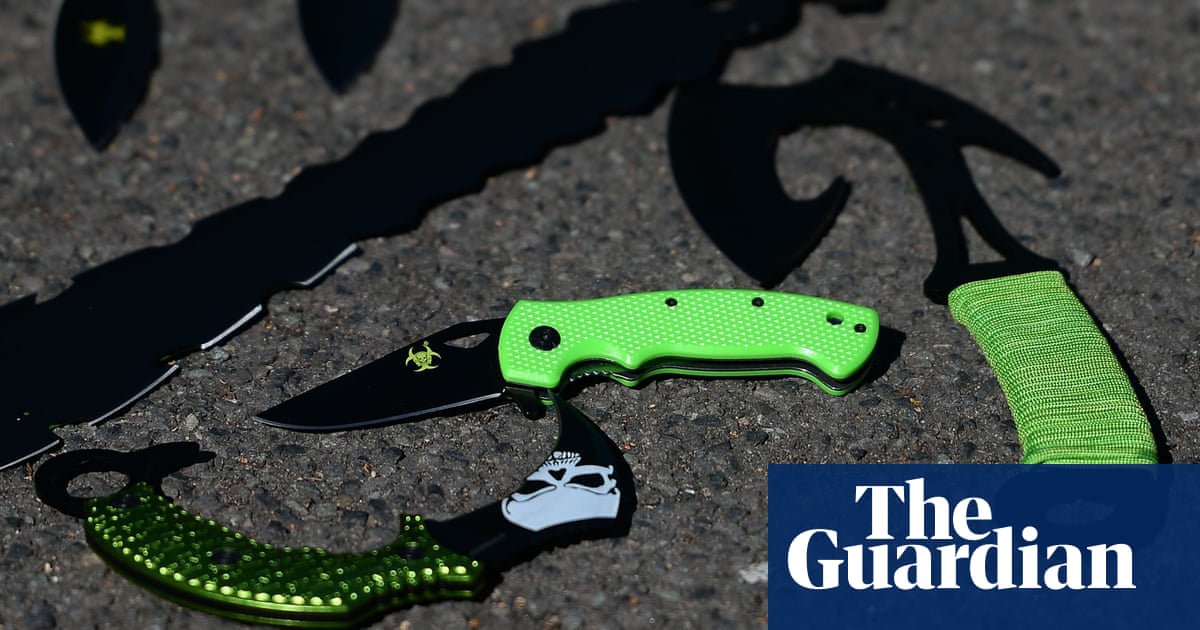
Prison officers in England and Wales could be allowed to use pepper spray to incapacitate children under plans to curb a sharp increase in violence at young offender institutions, the Guardian has learned.
Dogs and stun grenades are used in some YOIs to defuse conflict among 15- to 18-year-olds, the Ministry of Justice (MoJ) has said.
Two teenagers were burned in May by a grenade, a device designed to temporarily disorient not but physically harm.
Whitehall sources confirmed that the use of Pava spray, a synthetic form of pepper spray, across the five YOIs in England and Wales was under discussion by ministers.
It follows demands from the prison officers’ union for the introduction of the incapacitant spray after attacks on staff.
Any decision to allow the use of Pava on juveniles would be opposed by prison welfare charities and the prisons’ watchdog, who say its use would create further divisions between staff and the minors in their care.
Squirted from a canister, Pava spray, or pelargonic acid vanillylamide, causes searing pain and discomfort in the eyes for about 40 minutes and a burning sensation to skin.
In 2018, it was rolled out in men’s prisons in England and Wales. Since then, there have been claims of disproportionate use against disabled people and those from minority ethnic backgrounds.
Black adult prisoners were seven times more likely to have Pava spray used against them than white prisoners, MoJ figures showed in December.
The prison officers’ union, the POA, has called for the spray to be introduced in YOIs to restore confidence among staff.
Mark Fairhurst, the union’s national chair, said: “Our members must be given the chance to protect themselves and others. They are open to unprovoked attacks and witness horrendous violence without the ability to intervene. No wonder it has become so difficult to retain staff in these institutions.”
One prison officer said violence in the youth estate was “off the scale”, citing a “mass brawl” at Feltham YOI in west London this month.
“They were doing lessons when a rival gang of children smashed through the glass walls to start a huge fight,” the prison officer said. MoJ sources confirmed the brawl and said it was “resolved swiftly, with no children suffering serious injury”.
Between June 2022 and June 2023, the MoJ said the National Dog and Technical Support Group was deployed 62 times to YOIs, with dogs – German shepherds or similar – used in six of those incidents.
In information released to the Prison Reform Trust after a freedom of information request, the MoJ said general patrol dogs were not routinely used in the youth estate but deployed as a “high-level control measure”.
The request also revealed that in May 2023, two children were treated for minor burns “after the deployment of pyrotechnics at Werrington YOI [in Staffordshire] on to an exercise yard as part of an emergency intervention”.
The MoJ uses a type of stun grenade called Nico 9, which emits a blinding light and nine bangs at 170 decibels.
One criminal defence lawyer said violence, often related to gangs within YOIs, had become so severe that young people on remand were refusing to leave their cells.
“Some of our clients who are in prison, often on remand, are not coming to legal visits inside the prison when we come to see them because they are scared they will be attacked by another prisoner on the way from their cell to the legal visit room,” the lawyer said.
“Prisons have non-association lists to try to keep certain prisoners apart from each other if they are in rival gangs or live in different postcodes but sometimes attacks still happen.”
Evidence of rising violence in YOIs, which hold boys and young men between the ages of 15 and 21, has emerged in recent reports from the prisons watchdog.
In July, the chief inspector of prisons reported that children had armed themselves with hundreds of homemade weapons at Cookham Wood in Kent. The detention facility, which holds 77 boys, was described as “appalling”, violence was “rife” and weapon-making “widespread”.
The report said 228 weapons were found in the six months leading up to the inspection. Security checks were “inadequate”, while nearly a quarter of boys aged 15-18 said they felt unsafe. A number of the 360 members of staff were described as “demoralised” and “frightened”, with some seeming to have “given up”, according to the watchdog.
According to the non-profit prisoners’ paper Inside Time, each teenager costs the taxpayer £275,000 a year – six times the fees for attending Eton College.
Despite the report’s alarming findings, Charlie Taylor, the chief inspector of prisons, questioned extending the use of Pava to children. “My worry is that it starts off as being used in exceptional circumstances but suddenly those circumstances become less exceptional,” he said.
John Drew, an associate of the Prison Reform Trust, said Pava would mean extending the use of threats within the institution.
“Routinely arming staff with Pava could lead to the threat of violence becoming normalised in the management of children in custody. It risks adding to rather than reducing a deteriorating cycle of violence in the youth estate,” he said.
It is understood that civil servants are working with medical advisers and legal experts on whether to roll out Pava to the youth estate.
An MoJ spokesperson said: “The number of children in custody has fallen by 77% in the last decade meaning those who are in our care have often committed violent offences and pose a significant challenge to staff working in the youth justice system.
“The safety of staff and children is our number one priority and the use of advanced de-escalation techniques is extremely rare in the youth estate. They are used only by specially-trained officers as a last resort to resolve dangerous situations.”












